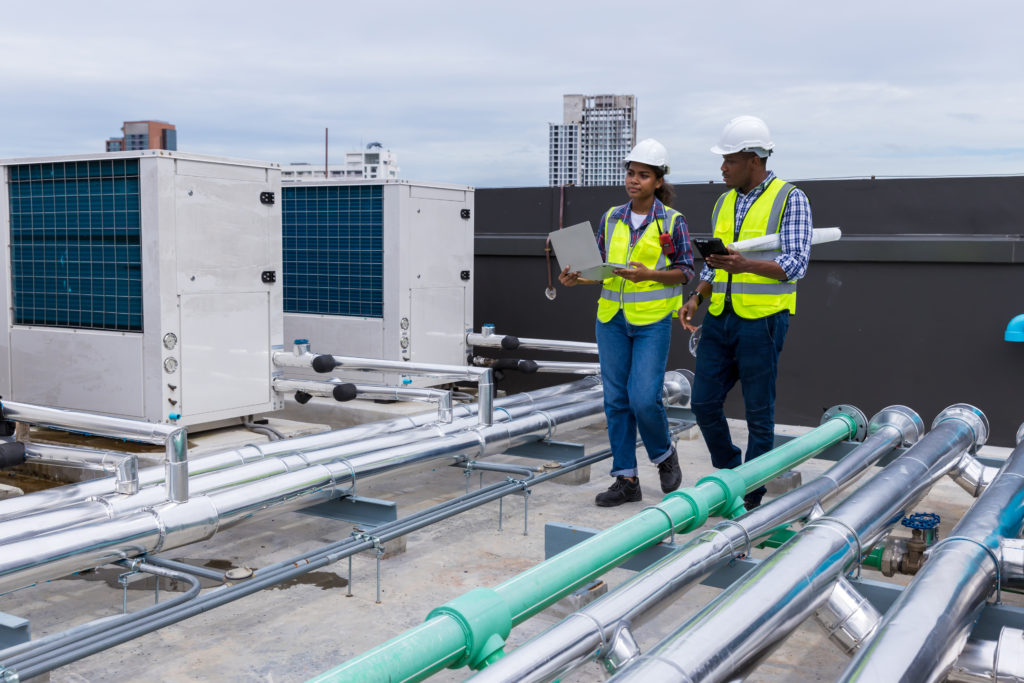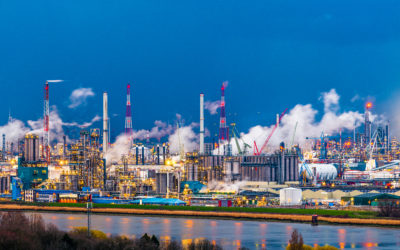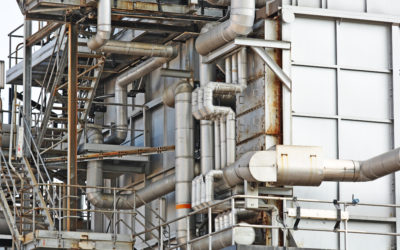Combatting Galvanic Corrosion in Heat Exchangers
Galvanic corrosion is common in systems where dissimilar metals come into contact, particularly in an electrolyte such as water. The risk of galvanic corrosion is especially high in heat exchangers, where metals like copper, steel, and aluminum are often used together for their unique thermal properties. Galvanic Cells form when two dissimilar metals are electrically connected. The metal with the lower potential (the anode) corrodes, while the more noble metal (the cathode) remains intact, causing degradation and potentially reducing the lifespan of critical components.
How Galvanic Corrosion Affects Heat Exchangers
Heat exchangers are vital in various industries, from energy production to manufacturing and HVAC systems, as they efficiently transfer heat between fluids. These systems often use multiple metals, making them susceptible to galvanic corrosion over time. The electrolyte, often in the form of circulating water or other fluids, acts as a conductor, allowing corrosion to occur, especially in areas with varying oxygen concentrations or chemical differences.
One of the challenges with galvanic corrosion is that it’s environment-specific. A metal that acts as an anode in one type of electrolyte could become a cathode in another, complicating protective measures. Traditional methods, such as metallic coatings or cathodic protection, often require frequent maintenance or replacement, particularly in high-temperature and high-pressure environments like heat exchangers.
The Role of HeatX in Preventing Galvanic Corrosion
This is where HeatX, a cutting-edge surface treatment technology developed by Oceanit, comes in. HeatX provides a revolutionary solution for the prevention of galvanic corrosion, specifically tailored for heat exchangers and other thermal equipment. The technology creates a protective barrier that helps reduce the effects of galvanic corrosion in the following ways:
- Superior Thermal Performance: Unlike some coatings that may reduce the heat transfer efficiency of heat exchangers, HeatX maintains and even improves thermal conductivity while protecting the underlying metals.
- Fouling Resistance: One of the leading causes of corrosion is surface fouling, which can create localized areas where galvanic cells form. HeatX prevents fouling, ensuring the surface remains clean and free from deposits that could trigger corrosion.
- Corrosion Protection in Multiple Environments: HeatX works across various electrolyte conditions, whether the heat exchanger is exposed to water, coolants, or other fluids, mitigating the risks of galvanic corrosion in a wide range of applications.
Why HeatX is Ideal for Heat Exchangers
HeatX not only addresses the direct issue of galvanic corrosion but also enhances the overall performance of heat exchanger systems. Its ability to withstand harsh operating conditions, combined with its anti-corrosion and anti-fouling properties, makes it an ideal choice for industries that depend on reliable and long-lasting heat exchanger performance, such as:
- Power generation
- Chemical processing
- HVAC systems
- Oil and gas
By applying HeatX to your heat exchanger surfaces, you protect against galvanic corrosion while improving operational efficiency, reducing maintenance costs, and extending the life of your equipment.
Conclusion: Future-Proof Your Heat Exchangers with HeatX
In environments where dissimilar metals are a necessity, galvanic corrosion is a serious threat that can compromise the integrity of heat exchangers. HeatX offers a state-of-the-art solution, providing robust corrosion protection without sacrificing thermal performance. As industries push for higher efficiency and lower downtime, HeatX stands out as the surface treatment technology of choice, ensuring your heat exchangers operate at peak performance while remaining corrosion-free. Learn more about HeatX with experts.



